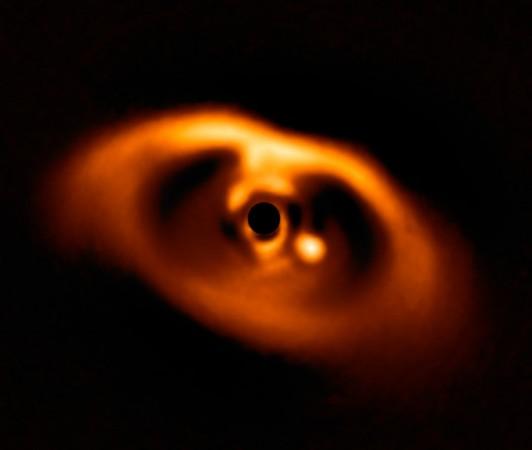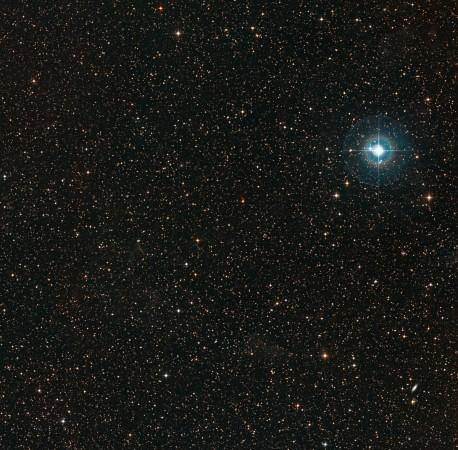
For the first time, a planet's birth has been captured in an image released by the European Southern Observatory (ESO). The image was shot by the Very Large Telescope (VLT) that the ESO operates.
The planet was found forming in the vicinity of young dwarf star PDS 70. It has been named PDS70b and it was seen cutting through the "planet forming material" in the star's vicinity. The VLT's SPHERE instruments detected it while also measuring the brightness of said planet at different light wavelengths. This allowed other properties of its atmosphere to be deduced accurately, notes a report put out by the ESO. VLT is one of the largest and most powerful telescopes on Earth.

This is not the first time that planet formation has been detected; theories of how planets are formed have been in place for decades now. Planets are formed when massive clouds of dust and matter that swirls around stars fuse, attracting more matter as it gets larger. PDS70b, notes the report, is doing just that.
The planet is about three billion kilometre from its central star, about the same distance as Uranus to the Sun. The planet is a gas giant several times the size of Jupiter, says the ESO.
70b also has a surface temperature that exceeds 1000 degrees C, it being a new planet an all- it is a lot hotter than the planets here in the Solar System.
Researchers also explained that the dark circle in the centre of the image is a filter to block out the light. The star's bright light would have otherwise made it impossible to detect the planet's formation.
Miriam Keppler, lead astronomer who was able to detect PDS 70's planet explains that, "These discs around young stars are the birthplaces of planets, but so far only a handful of observations have detected hints of baby planets in them. The problem is that until now, most of these planet candidates could just have been features in the disc."

















